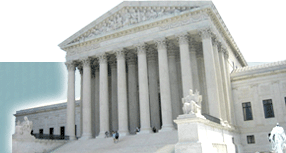The Basic Requirements for Patent
Go back to home page || Go back to last page
To be eligible for a patent, an invention must fall within one or more categories of statutory subject matter; it must be new, useful, and non-obvious to those skilled in the relevant art. In addition, patent statute 102(b) prohibits an inventor from getting a patent for an invention that was patented or described in a printed publication anywhere in the world, or on sale or in public use in this country more than one year before the filing date of the patent application.
Qualified statutory subject matter includes process, machine, manufacture,composition of matter, or their combinations. The following examples are not patentable: matters existing in the nature, scientific theories, the law of nature, and mathematical equations. In some cases, it is very hard to determine whether an invention falls within the statutory subject matter, and inventors
should not make the determination from reading statutory language. For example, if a compound is produced with a high purity, it may be patentable in the purified form even though it exists in nature. Application of the mental step doctrine (things can be done by mental steps are not patentable) in computer algorithms is complicated.
The first two requirements are very easy to meet. Thus, a product or a process having a new component or feature that did not exist in any of known products or processes will meet the novelty requirement. The second requirement is also easy to satisfy. What is required is some utility. It is not required that the invented product or process is better than those in prior art. A new and
non-obvious flying machine will meet this requirement even if it is unreliable, dangerous and inferior to existing jets. The biggest huddle is the non-obviousness requirement. Most of patent applications are rejected because they are obvious to those skilled in the art.While this issue is extremely complicated, an inventor can make an initial inquiry by asking whether there is suggestion in prior art that one can achieve the objective as the inventor does in his invention. If an article suggests that one will achieve C by combining A with B, an inventor confirm it is true. He cannot get a patent because it is obvious. Even an implied suggestion can make an invention obvious. Also, a suggestion making an invention obvious does not have to be in one single product, patent or publication. A suggestion may be found in two or more articles, patents, products or processes, or their combinations.
Statutory bars under section 102(b) may arise from inventors' own actions. An inventor conceived and reduced into practice an invention and published it in a scientific journal. The inventor did not file the first patent application within one year from the date of publication, the patent right was absolutely barred. Offer for sale of the patented product, or sale or offer for sale of a product made by patented processes, and use of an invention in public in the United States for more than one year may also operate as statutory bars to patent rights. To avoid possible statutory bar by actions of a third party, an inventor should consult a patent attorney soon after the inventor has made an invention.
For more information, please contact the firm
Go back to home page || Go back to last page
|

